Diet for Avascular Necrosis: The Real Dont’s
Osteonecrosis (ON), or “bone death” is a condition in which bone tissue dies because of decreased blood flow. Avascular Necrosis is most common among people with advanced forms of cancer, especially multiple myeloma (MM) and cancers that have spread to the bones. The risk of ON is increased by high-dose chemotherapy and certain medications, such as corticosteroids, anticoagulants, anti-blood-clotting agents, and immunosuppressive drugs. The cases of Postcovid avascular necrosis are also coming in leaps and bounds. I have been asked again and again- what is the correct diet for avascular necrosis?
Before we will proceed to the topic, have look at this description-
Charaka quotes “तत्र यान्याहारमधिकृत्य भूयिष्ठमुपयुज्यन्ते तेषामेकदेशं वैरोधिकमधिकृत्योपदेक्ष्यामः- न मत्स्यान् पयसा सहाभ्यवहरेत्, उभयं ह्येतन्मधुरं मधुरविपाकं महाभिष्यन्दि शीतोष्णत्वाद्विरुद्धवीर्यं विरुद्धवीर्यत्वाच्छोणितप्रदूषणाय महाभिष्यन्दित्वान्मार्गोपरोधाय च||” in context of Viruddh Ahara (incompatible food items).
Here Charaka tells about an example- Fish should not be cooked or taken together with milk. When taken together, this causes, two things-
- विरुद्धवीर्यत्वाच्छोणितप्रदूषणाय – because of the opposite energies, it vitiates the blood.
- महाभिष्यन्दित्वान्मार्गोपरोधाय – due to the heaviness/cloudy nature it blocks the passages.
Now, this is something that gives us insight into the wisdom of Ayurveda about understanding the importance of diet for Avascular Necrosis.
The exact causes of ON are unknown; however, lack of blood supply to bone marrow cells has been suggested as one cause. Another theory suggests that vaccination for influenza might trigger ON in patients who are at an increased risk for this condition. Furthermore, alcohol abuse could increase the risk of AVN.
It is not easy to comment straight forward about the Dietary recommendations for avascular necrosis. But without dietary understanding, Avascular necrosis treatment in Ayurveda remains incomplete. Here I am discussing the don’ts of the diet for avascular necrosis.
Basics about Bone Health
The main confusion is- we don’t know the basic difference between osteoporosis and avascular necrosis. Most of the time we keep on believing that the diet for osteoporosis and avascular necrosis should be one and same. Because- bone decay is common in both.
But nature of the bone decay is different.
Historically, avascular necrosis was considered to be due to ischemia.
Today we know better. The histological picture of the necrotic bone contains vascular channels that are plugged with proteinaceous material and contain erythrocytes.
There are also large numbers of osteoclasts that keep on eroding the bone, and may sometimes even create a cleft or crater in the bone.
Do you know what these phenomena are called?
If you said osteoporosis, you were wrong!
The correct answer is avascular necrosis.
Osteoporosis does not cause depressions and craters in the bone, but only thinning of the cortical bone. So there should be a difference between the diets for AVN and Osteoporosis.
Along with Ayurvedic medicine for Avascular necrosis, you also need to know the diet for Avascular necrosis.
Foods That Complicate Bone Health
Here whatever I am mentioning under diet for avascular necrosis are the foods that are harmful to bones. Because once we know what can be harmful and we can eliminate that particular food, it will help in slowing down the progress of the disease.
So first we will discuss foods which are harmful to you.
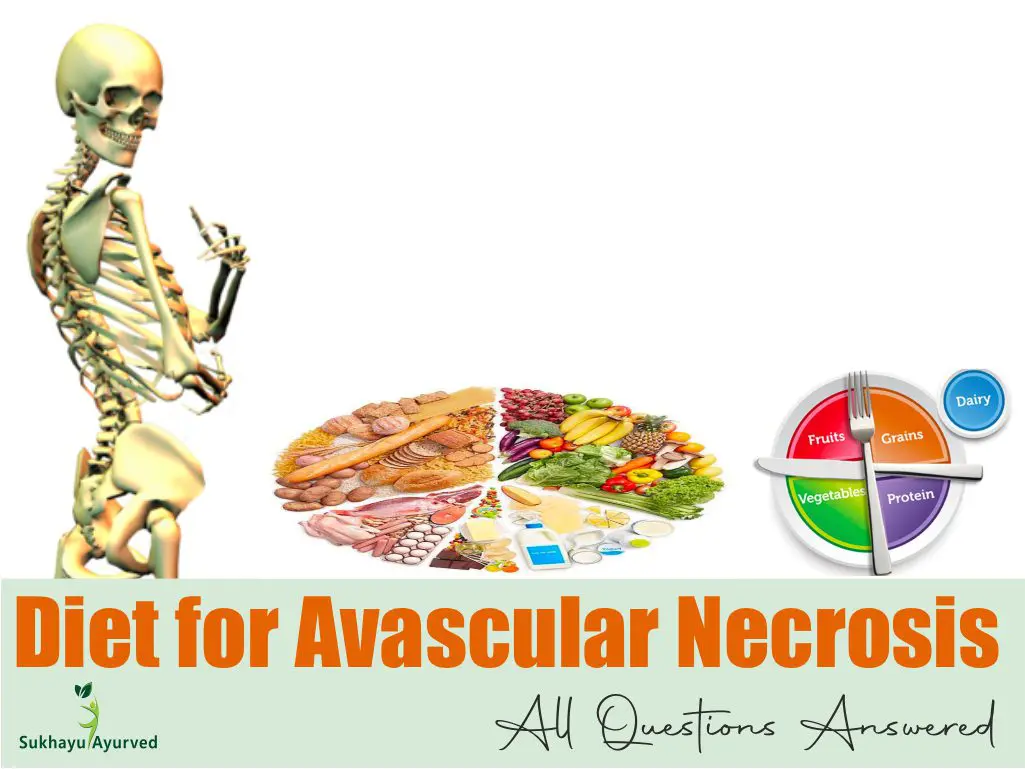
None of the details are “because I think“. This is all because we have backing from scientific understanding. And amazingly science is the same, it is not different for Ayurveda and Allopathy.
Some foods, however, can have an adverse effect on bone health by compromising calcium or by acting as antinutrients to the body’s ability to absorb nutrients from other sources.
Foods high in oxalate and phytic acid are two such examples, as they bind with minerals including calcium, impairing its absorption and utilization within the body. These minerals then pass through your body without being put to use. So we need to avoid these two categories to help the body to stop the progress of avascular necrosis.
For a better understanding of the diet for Avascular necrosis, we need to understand the structure and requirement of bone.
Diet for AVN is not about Calcium
When you hear about AVN for the first time, you, your family, and your friends start looking for diets and foods- which are high in calcium.
But this is not true at all.
There are two types of cells- osteoblasts and osteoclasts.
Osteoblasts are the cells responsible for making new bones and osteoclasts eat up the bone.
When there is an imbalance in their activities- osteoporosis-like conditions appear. But in the case of Avascular necrosis- new nutrition is not available. And in this condition, there is a complete loss of activities of the osteoblasts.
On one side, we don’t have a blood supply and on another side, the toxins keep on building in the bone.
In spite of providing the calcium- we need to make sure that blood supply to the bone. This is something which we need to follow.
As per Ayurveda- the two Dhatus responsible for Avascular Necrosis. Asthi and Majja. The second is- Vata Dosha.
When the passage of Vata dosha is blocked, no movement can happen. This leads to an imbalance in Majja Dhatu (bone marrow), which leads to the destruction of the Asthi (bone). Here the other thing is – vitiated Rakta Dhatu, which is the main reason behind everything.
So we need to look at three things at a time-
Bone, bone marrow, Vata Dosha, and Rakta (which are dosha and dhatu, both).
So we will discuss the following-
- Foods which agravates the blood.
- Diet which cause aggravation of Vata.
- Food damaging the bones.
Foods which aggravates the blood
Pitta dosha and blood are intimately linked. As a result, any qualities that impair blood flow cause rakta vitiation as well. Increased/reduced vitiation of pitta generally results in the same degree of rakta vitiation.
The blood is said to be impure due to the presence of the following factors in Ayurvedic texts:
- Food that is unhealthy, spicy, and fiery.
- Alcoholic beverages with a high alcoholic content
- Food intake in large quantity
- Excess salt, alkaline, acidic, and pungent meals
- Excess consumption of horse gram, black gram, flat bean, and mustard oil is common.
- Water yam (Pindalu – Dioscorea alata Linn), radish, and tamarind should all be avoided.
- Anoopa (marshy animals), Bileshaya (living in holes), Prasaha (living beings using their teeth, claws, and/or boneless tails to capture food) are all examples of the “mouth-eaters” category; The Jalaja species is an aquatic animal that eats by tearing flesh from others.
- Sour curd (Dadhi), sour whey (Amla mastu), tart fermented preparations (Sukta), wine (Surra), and spirituous beverages are all examples of sour drinks.
- Food poisoning is a term used to describe several forms of sickness caused by ingesting contaminated food or liquid. It can be described as follows: spoilt (Upaklinna), putrefied/fetid (Pooti) meals, and bad food combinations, among others.
I don’t know how did ayurvedic seers were aware of the impact of “alcohol” in the condition of Avascular necrosis. The treatment of Avascular necrosis is possible with Ayurveda because of this clarity.
Pinpoint planning of Diet for avascular necrosis
Last week I received a message on social media from one orthopedic doctor who laughed at me. He laughed because we have resulted in Avascular necrosis. Besides using the word “quack”, he better called me “GOD” (because they don’t spare the God too).
I wanted to answer.
But I didn’t. I am used to all this humiliation. Because I opted to repair the joints other than to replace those.
Anyhow rather than replying to someone, who has his own belief system. I just believe to continue my work with the same energy and passion.
5000 years back, we didn’t have cases of Avascular necrosis. But how they (Ayurvedic seers) knew all these details about a disease which so-called modern-day doctors knew less!!
So, we need to look at the next, part which can help you with the diet- Vata Dosha aggravating factors.
Vata Aggravating Dietary Regime
Vata is not air. This is a trait.
Something which controls all movement.
Every type of movement. Yes, movement of your blood to the bone.
Vata has a few characters, which are involved in Avascular necrosis are- Dryness, Constriction, and Roughness.
So, the diet that increases these features should be avoided completely.
- Barley
- Corn
- Oats
- Heated pasteurized honey. Foods with honey cooked in them.
- Anything which can increase dryness.
- Artichoke
- Bitter melon
- Broccoli
- Spinach
- Brussels sprouts
- Burdock root
- Cabbage (raw)
- Cauliflower (raw)
- Celery
- Corn
- Onions (raw)
- Peppers
- Radish (raw)
- Sprouts
These are the items which you need to avoid in all conditions. This is something mentioned properly in Ayurvedic text.
There is a hue and cry about raw foods.
Eat, “raw” and “uncooked” food.
Just eat “fruits”.
How does Ayurveda look at the raw, uncooked food theories?
Should I eat uncooked and raw food in Avascular Necrosis?
This is something I came across when discussing the diet for avascular necrosis.
Information “sales” easily.
Knowledge and wisdom are hard to accept.
Someone started this thing, for some reason.
Perhaps with some good intention.
I regard this intention.
But, when it comes to Ayurveda and the concept of diet in Ayurveda. Because no other full-fledged medicine system has talked about the importance of the diet, with the clarity as much Ayurveda does. So the opinion matters!!
We know one thing so far – Vata dosha is a prime accuse for Avascular Necrosis, but here the game happens with the involvement of the blood (Rakta Dhatu). So we need to consider a few things about the food, as discussed above- the food should not be –
- Dry (increases brittleness of bones),
- Rough (causes microfractures),
- Constricting (leads to the blockage of blood supply),
- Vidahi- pollute and aggravate the blood.
I am sorry to tell you, but all these characteristics are present in the Raw food diet for avascular necrosis.
So if you ask Ayurvedic view (not my view, at all) it is a big no for the raw foods (and I agree to the wisdom then information).
Besides these characteristics, raw food has its own limitations too.
Ayurveda on Raw Food
Also, to meet the needs of the growing population, artificial methods of growth and cultivation of foods are also in practice, as the use of artificial fertilizers and pesticides. Commercial farming has also become widespread, destroying natural rain forests and turning them into farmlands. Hence foods procured from distant places, grown with the help of artificial fertilizers and pesticides, preserved using chemicals, and refrigerated and transported are not good for health.
The cooking is about conversion.
Substitution of the food substances’ natural characteristics or form is a must in order for them to be eaten.
They must be altered or processed into a different form in order to change the characters or shape of meals; this is referred to as “transforming” or “processing” them. This would make it simpler to consume and digest food components.
Various processes for food preparation are described in Ayurveda. These include altering the form and consistency of meals to make them friendly and digestible.
The usage of fire for culinary purposes is one of the most common techniques to alter food. Food components that are difficult to eat raw due to their weight are cooked in order to make them more digestible. For example, rice when raw is heavy (hard to digest). It becomes light for digestion after being cooked over the fire (easy to digest).
So in one word- NO is the answer from the timeless wisdom of Ayurveda when it comes to going for only raw food as a diet for Avascular necrosis.
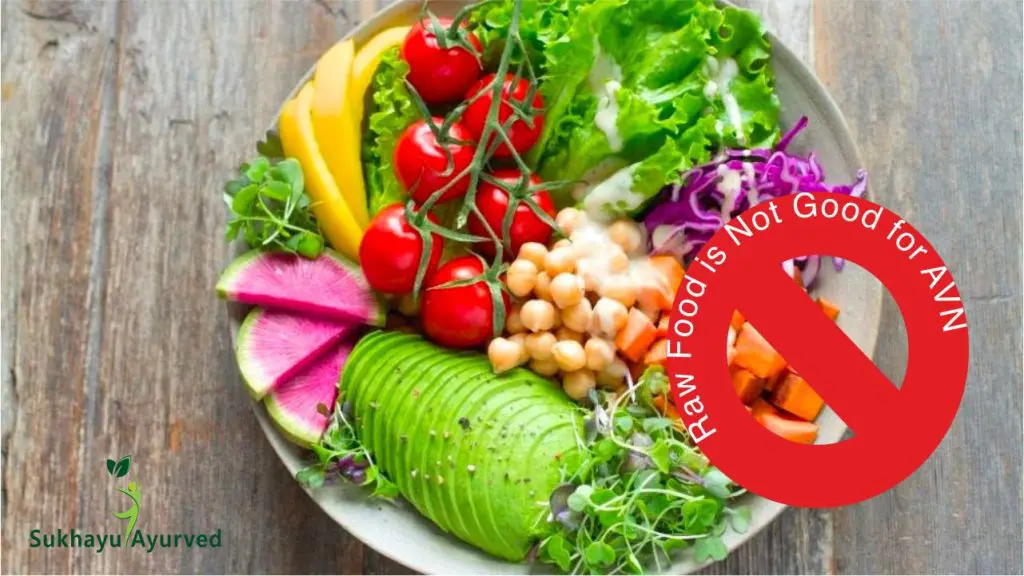
One more thing you need to understand for better recovery from Avascular Necrosis. And that is the importance of the “Fats” for your body.
Role of Fat cells in Bone health
I am sharing two excerpts from two famous research papers, here-
Adipocytes and osteoblasts are derived from the same pluripotential mesenchymal stem cell (or other lines) that has an equal potential to differentiate into adipocytes or osteoblasts (or other lines) under the influence of several transcription factors.
Fat-depleted bone marrow has recently been discovered to play an important part in the paracrine and endocrine activities of this depot, which controls osteogenesis and hematopoiesis.
Role of bone marrow adipose tissue in bone health
We all appreciate “science” for being modern, knowledgeful, and evidence-based (PubMed publications?). But when I revisit Ayurveda for its knowledge, it mentions-
रसाद्रक्तं ततो मांसं मांसान्मेदस्ततोऽस्थि च| अस्थ्नो मज्जा ततः शुक्रं शुक्राद्गर्भः प्रसादजः||१६|| This verse comes from the Grahani Chikitsa Adhikar of Charaka Samhita. Charak. The bold letters mean- Adipose tissue is responsible for the development of bones.
But, sorry! Once again I feel bad for people who are relying on “information” rather than “wisdom”. They all believe that losing fat will help the bones??
Secondly, the complete avoidance of fats from food, going Raw is also a challenge for Avascular Necrosis.
There cannot be a standard for everyone. One thing, which suits me might not go well with someone else. So don’t follow some diet to lose fat from the body.
The word I regard in such conditions is- ADEQUATE. You should have and you should take adequate amount of fat in your diet and that is important for the health.
The incompatible foods:Avoid from Diet for Avascular Necrosis
Many of us might have heard the word “गरम सर्द” a Hindi “saying” telling the sudden alteration in temperature. Something considered as a cause of disease. Almost the same is the concept of incompatible foods in Ayurveda.
When two things, which can “interact” negatively come to the body together- these cause diseases. This is the concept of Virrudha Ahaar. The one- fish and milk we discussed above.
The main problem with the globalization of food and culinary skills is- we have started mixing everything into anything. We don’t give a second thought while adding – milk and buttermilk in a recipe and we also season the same dish with lemon.
You might have heard your grandmother shouting at you – don’t take milk with mooli parantha. But this wisdom of Ayurveda, which was part of family traditions diminished. Some fancy videos on youtube had taken over this wisdom!!
There is a list of foods, which are incompatible. These should not be part of the diet for Avascular necrosis but are not good for anyone.
Role of Kidneys in Bone Health
The research, carried out at the University of Salford, investigated whether kidney tissue formed osteoblasts (cells that form bone) or osteoclasts (cells involved in the resorption of bone). This was done using animal models with samples taken from both rat kidneys and human renal biopsies. The results showed that on average there were more osteoblasts present than expected.
The findings also show that different cell types contribute to the production of each type of cell (osteoblast or osteoclast), suggesting there is a balance between cells forming bone and cells resorbing bone.
The researchers suggest that the kidneys play an important role in fine-tuning the balance between forming and resorbing new bone tissue. This process is known as bone turnover, which plays a key role in maintaining healthy bones throughout life. The study raises questions about whether this process could be altered by factors such as aging or kidney disease, which would likely alter the balance of cells involved in forming and resorbing bone tissue, possibly leading to osteoporosis or breaking bones more easily.
Now again I will amaze you with knowledge and understanding of Ayurveda.
We know that Medas/Fat have a deeper role in bone health. The same fat remains under the control of Kidneys as per Ayurveda and western sciences.
So the foods which are not good for kidneys should be avoided for the betterment of the bone health in diet for Avascular Necorsis.
Oxalates: A Big Don’t for Diet for Avascular Necrosis
Researchers have found a strong link between a high intake of foods high in oxalate and low bone mineral density, which increases the risk for osteoporosis and the progress of avascular necrosis. You need to avoid these for proper reversal of avascular necrosis.
Some of the worst offenders when it comes to high-oxalate foods are nuts and grains. Other high-oxalate foods include black tea, chocolate, rhubarb, beets, and greens such as spinach, kale, and Swiss chard. For many people with kidney problems or rheumatoid arthritis (RA), however, these foods can be problematic even in small amounts due to their oxalate content.
Foods with lower levels of oxalates include
- Citrus fruits like oranges and grapefruit;
- excess of dairy products;
- green beans;
- carrots;
- peas;
- herbs like basil,
- cilantro, and parsley; and
- grains like oats.
If I revisit Ayurveda the same concern appears in another way. The problem with Avascular necrosis on the level of Gunas is- dryness increases and this dryness increases the decay of the bones. Because bone is brittle itself. Therefore foods which are high in dryness are not good for bones.
And when I look at the list of these “oxalate” rich foods the one thing that appears is- DRYNESS. Therefore the Ayurvedic diet for avascular necrosis shouldn’t have these foods.
Phytic Acid: Antinutrient for Avascular Necrosis
Similar to high amounts of oxalates, a high intake of phytates can also lead to lower bone mineral density. Phytic acid is found naturally in many plant foods – particularly seeds – as well as grains and nuts, though phytates can also be introduced through food processing techniques.
To reduce the impact of these antinutrients on calcium absorption, some sources recommend chewing nuts and seeds thoroughly, soaking them, or allowing them to sprout before eating or tossing them in the oven at a low temperature for 15 minutes first.
Phosphorus and Bone health
Phosphorus is another mineral that plays a crucial role in bone health. It is both abundant and found widely throughout the body, including in bones and teeth. While phosphorus can be obtained through food sources such as dairy products and seafood, it is also added to many processed foods such as soft drinks, candy bars, baked goods, cereals, and canned items.
Much like calcium supplementation, high-phosphate diets have been linked with an increased risk of osteoporosis and hip fractures.
Researchers note that excess phosphates can lead to decreased blood pH levels over time, which then stimulates the kidneys to release more calcium into the bloodstream while simultaneously inhibiting its reabsorption by the bones. This ultimately results in an increase in urinary calcium.
Protein: More Than Just Building Blocks
Although it’s not as prevalent as phosphorus or oxalates, protein is another important consideration when discussing bone health. Protein contains the amino acids that are needed to build new bone cells
Getting enough protein on a daily basis is essential for preserving healthy bones throughout life. Vegetarian sources of protein include beans and legumes; tofu; whole grains like quinoa; nuts and seeds; dairy products including milk, cheese, and yogurt; eggs; fish; chicken; beef; pork; lamb; bison.
To ensure that you are getting adequate amounts of protein, focus on incorporating a variety of these different foods into your diet for avascular necrosis.
But this cannot be a general rule for everyone. Patients suffering from kidney issues and other autoimmune conditions should avoid the high protein diet. And never ever miss the word “adequate”.
Phytoestrogens: A Possible Bone-Health Benefit?
While it’s true that phytoestrogens can cause problems for those with thyroid issues, there are some benefits to consuming these plant estrogens as well.
Specifically, research indicates that isoflavones – the primary types of phytoestrogen found in soy products – may help prevent bone loss and fractures, particularly in menopausal women. Other studies have shown similar results when it comes to osteoporosis prevention among postmenopausal women who regularly consume soy foods
Soy foods include fermented varieties like tempeh and miso as well as tofu and edamame. Other good sources of phytoestrogens include flax, chia, and hemp seeds; legumes like chickpeas and lentils; the spice turmeric; and fruits including apples, berries, plums, peaches, and pears.
Ayurvedic Diet Plan for Avascular Necrosis
If you ask me, I am not in favor of any “diet-plan”. Because life is not about “walking between the lines”. Life is about living a normal life. And this is a fact that “Dieting increases stress sensitivity, and stress makes you ill”. So it cannot be advisable to buy stress to fight against diseases like Avascular necrosis.
Those of you who’ve tried to keep up with a diet will understand what I mean when I say that diets are the worst. They put limits on everything from what you can eat to how much you can eat, and sometimes they feel like another job altogether. But frankly, I think all these rules do is make people cheat. After all, no one likes being told what to do–not even your body! If there’s anything we humans have in common it’s that we’re big fans of breaking the rules whenever possible.
So don’t fall prey to some “rule-breaking”.
Follow the don’ts which can harm your bone and can aggravate Avascular Necrosis.
Rest for specific details- how can Sukhayu help you for reversal of Avascular Necrosis, you can consult me or just leave a message on whatsapp. We will try to assist you in the best possible way.




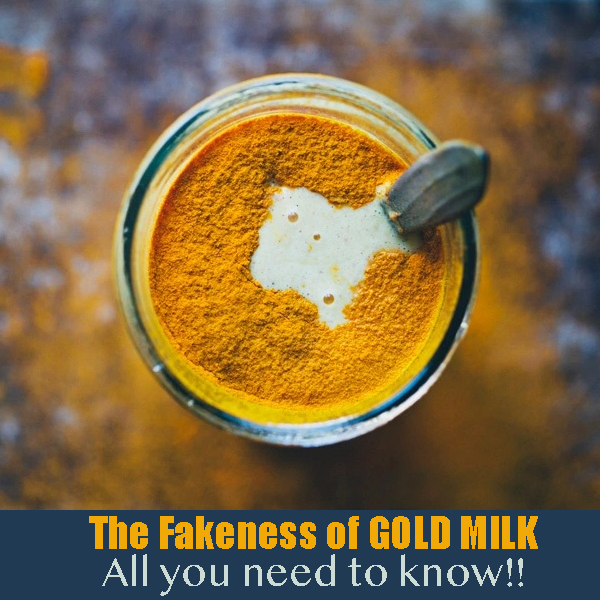
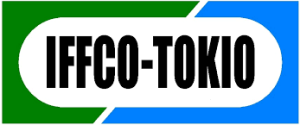
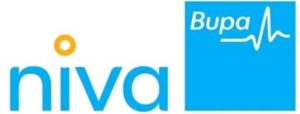
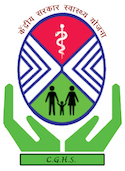
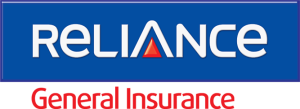
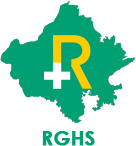

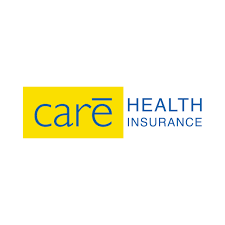

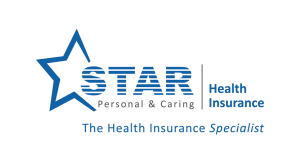

2 comments